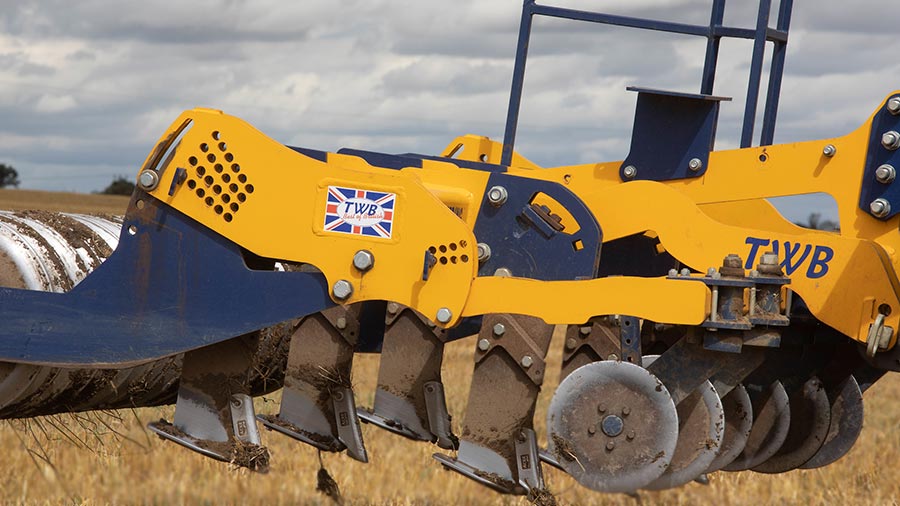Subsoiler helps soil and cover crops on heavy land in Northants
 Library image © Tim Scrivener
Library image © Tim Scrivener The use of a subsoiler on a heavy land Northamptonshire farm is being aimed at relieving soil compaction and allowing cover crops to thrive to help the farm improve its soils and break through a perceived yield plateau.
One 12ha field on the farm has been in no-tillage arable for the past six years, but soil compaction had built up at depth due to years of heavy machinery travelling across the surface, and the soil had become wetter over the years.
Jenni Dungait, an independent soil scientist, said the field could switch from drought to waterlogging in six weeks, and something needed to be done about the very dense compacted soil below 150mm. She advised the farm to use a subsoiler.
“I think in heavy soils, plants become waterlogged and are unlikely to express themselves, and so they need to be helped along,” she told a recent briefing.
See also: Soil health improves after switch to new drills
Soil improvement
Prof Dungait suggested using a low disturbance subsoiler down to 200mm on William and Andrew Pitts’ farm following a winter wheat crop, which would allow any following crops to continue the good work of soil structural improvement.
The 12ha field, known as Fortress, was chosen by the agrochemicals group BASF for a trial as the heavy textured clay over chalk was of a very even type and had shown signs of reaching a yield plateau.
Deep down at below 150mm, the soil was very densely compacted, which can be typical of a no-till soil. There was not much life down there and it desperately needed more roots and air, she added.
Mike Green, agriculture sustainability manager at the agrochemicals group, explained that after the subsoiler had been used, the field drainage dating from the 1980s started to work better, and soon after water started to run clear as the subsoiler helped “re-connect the soil with the drains”.
Prof Dungait explained that the soil only needed a bit of help in terms of the subsoiler to allow future crops and their roots to do their work and open up and improve the soil structure still further.
The field at the Pitts’ farm at The Grange, Mears Ashby, between Northampton and Wellingborough, was divided into four to try different treatments and improve on the work of the subsoiler.
Each strip was as follows:
- A four-year herbal ley, with sheep brought onto the farm to graze the strip.
- A one-year “super charger” cover crop, to grow organic matter and reset the soil structure.
- A solutions plot, to be farmed using some of the latest products from BASF.
- A two-year “super charger” cover crop.
Cover crop mixture
The cover crop mixture used included vetches, black oats, tillage radish and clovers, and was chosen to give good rooting ability and keep the soils open, and not revert back to a previous compacted state.
The field will be measured over the next five years for such parameters such as soil organic carbon, bulk density, and also soil health and water quality.
Between the four field trial areas an 8m wide “agrifloristry” strip of wild flowers was created to increase biodiversity.
Prof Dungait will be comparing the field’s soil with an area of woodland in the corner of the field which had been put into trees for game cover some 60 years ago.
These woodland soils were more open, better drained and of a stronger colour, showing they had more carbon incorporated, and showed “where we would like to be” with the field soils, she added.
All speakers were attending a recent BASF briefing on sustainability in agriculture

